Sous Vide Cooking
The chef of a kitchen, whether it be home or restaurant, feeds off of his or her own creativity, and ability to wow the senses of the palate. Consequently, chefs across the world spend hours and hours researching ways to create the perfect dining experience. Some research shows that the typical food aficionado is looking for something more than the regular ol’ microwaveable dinner. With modern day methods of preparation, and the addition of science in today’s kitchens, it is no 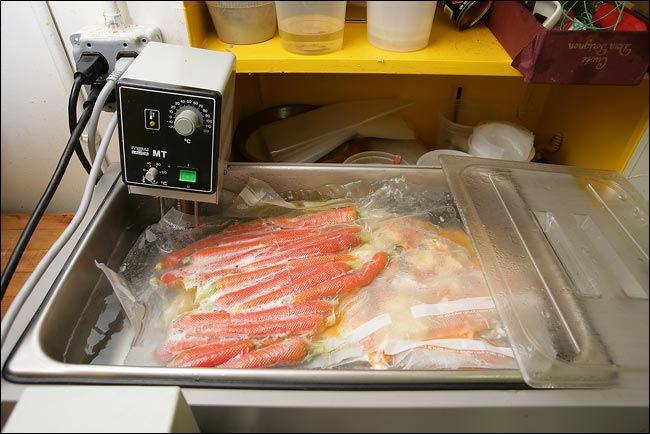 surprise that a method called "sous vide" is becoming very popular. In many fine dining establishments across the world, this flavor-driving cooking preparation is popping up on Chefs’ menus. Sous vide is French,meaning "Under Vacuum", and describes a method of cooking in vacuum sealed plastic pouches at low temperatures for long periods of time.
surprise that a method called "sous vide" is becoming very popular. In many fine dining establishments across the world, this flavor-driving cooking preparation is popping up on Chefs’ menus. Sous vide is French,meaning "Under Vacuum", and describes a method of cooking in vacuum sealed plastic pouches at low temperatures for long periods of time.
Sous Vide is not unlike braising, a method in which ingredients are tightly covered and cooked in a small amount of liquid for a long period of time. The difference is, ingredients are sealed in a heat-safe bag with the air sucked out. The bags are then put in heat circulation baths that maintain specific low temperatures to slowly cook ingredients. Because they are sealed, absolutely no moisture is lost during cooking. Seasoning added before sealing, goes a lot farther because of the pressure within the bag. Food finishes incredibly tender, fabulously seasoned, and with flavors that few would expect from any cooking method. Furthermore, no oxidation occurs during the cooking process, because no oxygen can get in or out. It’s a also a pretty hassle free and "no mess" way to cook. Put everything in the bag, seal it tightly, and cook. Flavors are extremely enhanced within these bags, because nothing can escape during the cooking process. When a meat is braised in a liquid, typically, the flavors leach out into the liquid. It is then the chefs responsibility to take that braising liquid, and reduce it down to coat the meat on the plate. Sous Vide eliminates that process, and keeps the flavor and moisture within.
Meats have smooth, melt-in your mouth textures and are cooked evenly from top to bottom to the desired temperature. Compare this method to grilling for instance. A grilled meat is typically prepared at temperatures ranging from 400-700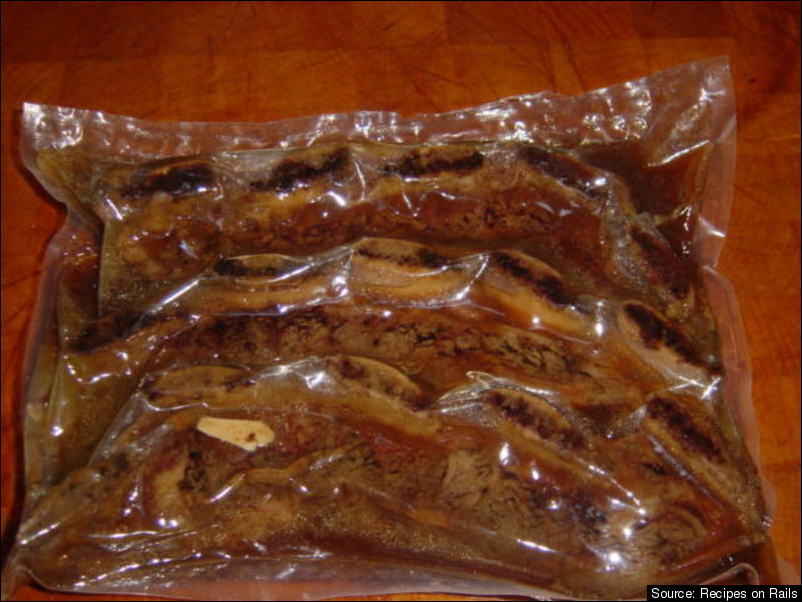 degrees. When the center of that meat is at the desired temperature of, let's say, 135 degrees, a crust has been formed and the outer edges have overcooked. During the Sous Vide process, you can place the meat in the water bath and never have to worry about the meat exceeding the temperature of the water bath, which gives you more time to prepare the rest of the meal.
degrees. When the center of that meat is at the desired temperature of, let's say, 135 degrees, a crust has been formed and the outer edges have overcooked. During the Sous Vide process, you can place the meat in the water bath and never have to worry about the meat exceeding the temperature of the water bath, which gives you more time to prepare the rest of the meal.
What about my crust? Caramelization is one of the most beautiful ways of gaining flavor and texture. While cooking in a bag, we are eliminating the ability for the Maillard Reaction (browning of amino acids and sugars) to occur. A simple solution is to finish the cooking process in a sauté pan when you are ready to plate. This way, you will have a buttery-tender mouth watering steak with that great 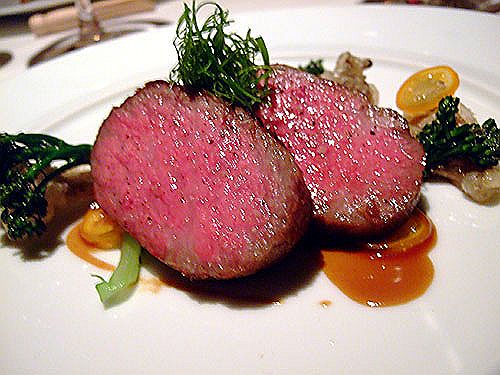 caramelized crust. A perfect 10 in my book!
caramelized crust. A perfect 10 in my book!
So at home, we have some challenges. Most of us can’t afford to purchase a Cryovac machine, which are commonly found in industrial kitchens to vacuum seal proteins, sauces, raw and prepared foods. Sometimes the food is then cooked in the bag, while other times, the pressure of the packing process is used to infuse flavors into ingredients.
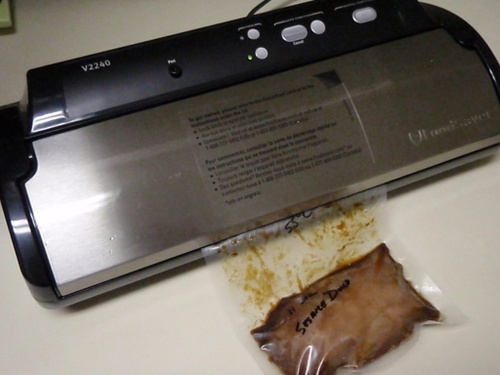
Fortunately this technology has been made available to the home chef, and if you stay up late to watch those infomercials or QVC, you can find a variety home versions of vacuum sealers, which can also be purchased at your local discount stores.
The method was originally developed by George Pralus in the mid 1970’s for the restaurant Troisgros (of Pierre and Michel Troigros) in Roanne, France. He discovered that when cooking foie gras in this manner it kept its original appearanceand and did not lose excess amounts of fat, also retaining a better texture. Another pioneer in the science of Sous Vide is Bruno Goussault, who further researched the effects of temperature on various foods and became well-known for training top chefs in the method. As Chief Scientist of Cuisine Solutions, Goussault thoroughly developed the parameters of cooking times and 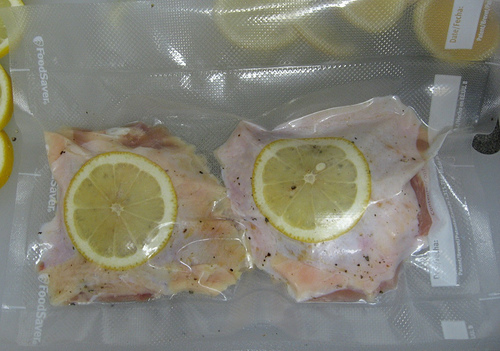 temperatures for different foods.
temperatures for different foods.
When you cook at home, you have a lot of flavor in your apartment,'' Goussault explained. ''And when you cook sous vide, all that flavor is inside the bag.'' The sous vide bag works as a hermetic seal, keeping in both juices and aroma; and by cooking in water, you get better heat transfer than you would in, say, an oven.
The sous vide method was adopted widely in Europe but almost entirely for low end, fast food venues. Chefs made meals, most commonly stew, during the off hours of their restaurants, Cryovacked them, then sold them to bars to make extra money. As airlines began to use the method, sous vide gained popularity, but not prestige.
Joel Robuchon 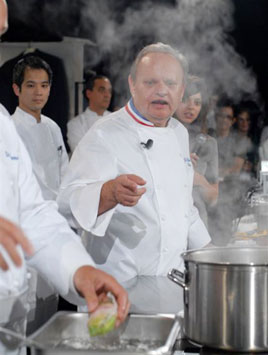 The sous vide method is now used in several gourmet restaurants under Thomas Keller, Grant Achatz, Paul Bocuse, Joel Robuchon, Alain Ducasse, Charlie Trotter, and others. Amtrak has used this method of cooking in the dining cars of its long-distance trains, and recently began using the method on its Acela Express trains.
The sous vide method is now used in several gourmet restaurants under Thomas Keller, Grant Achatz, Paul Bocuse, Joel Robuchon, Alain Ducasse, Charlie Trotter, and others. Amtrak has used this method of cooking in the dining cars of its long-distance trains, and recently began using the method on its Acela Express trains.
It is important to note that since the early stages of sous vide cooking, there were safety concerns about cooking in bags where botulism might grow. Goussault learned and proved that the long and controlled cooking times killed the bacteria when temperatures were monitored carefully. The controversy now lies in the popularity of this revolutionary method. Thermometers are essential, as the close monitoring of temperatures in this cooking method, can prevent any food safety issues. To help with food safety and taste, relatively expensive water-bath machines (thermal immersion circulators) are used to circulate precisely heated water. Differences of even one degree can affect the finished product. We at home can either purchase an 'at home deep fryer' and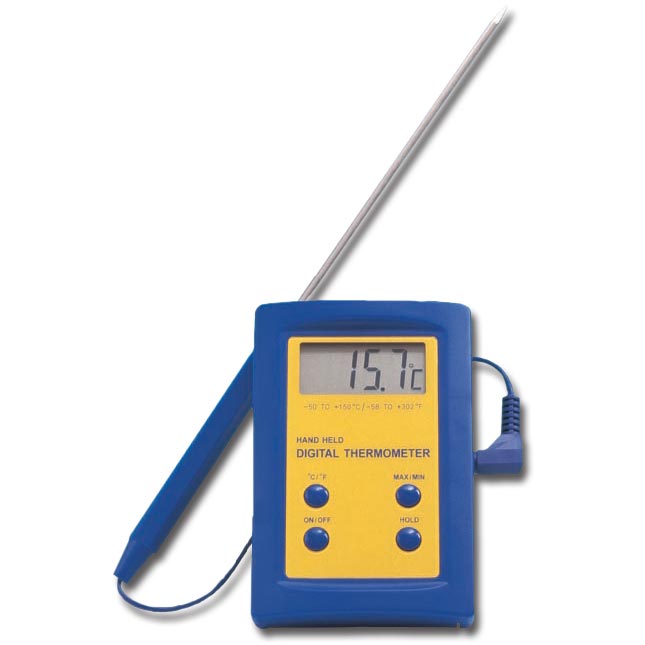 use water instead of oil (be sure to buy one that can be set to a low temperature), or use a pot on the stove, making sure to use and monitor an accurate thermometer.
use water instead of oil (be sure to buy one that can be set to a low temperature), or use a pot on the stove, making sure to use and monitor an accurate thermometer.
New York City has taken steps in the last three years to make sure restaurants have certification for using the 'sous vide' technique. There has been a great deal of controversy in relation to this method, because it was never closely monitored by the health department, and there were no codes in place. Restaurants which use the sous vide method must now have an HACCP (Hazard Analysis Critical Control Point) plan, devised with the department of health. These plans are very time consuming and expensive to develop, making it almost impossible for small restaurants to legally use their cryovac machines. Large establishments such as Thomas Keller’s Per Se and Wiley Dufresney’s WD 50 can work with inspectors to prove that their methods are safe and obtain approved HACCP plans.
So how do you do it? Many chefs are complicating this process to drive more and more flavor to the end product. But simply put:
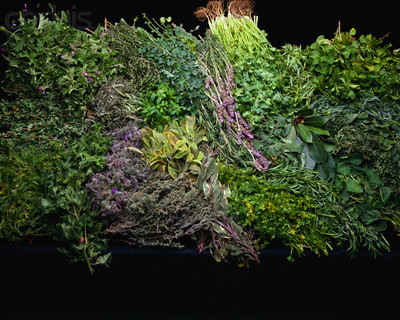 Step 1: Prepare your food by cutting it into the desired shape and size for cooking.
Step 1: Prepare your food by cutting it into the desired shape and size for cooking.
Step 2: Season your food cautiously, place in the bag, and remember a little garlic goes a long way! Add any cooking wine, broth, liquid, aromatics, and herbs that you wish to enhance flavor.
Step 3: Bring your water bath to a constant desired temperature
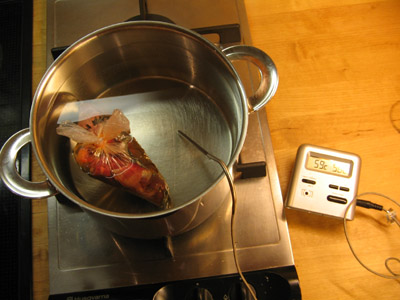
Step 4: Using a cryovac machine, or food saver, seal the bag and remove the air (vacuum seal). If you are unable to get a vacuum sealer, just find a durable, heat safe cooking bag and seal it with a twist tie. Just be sure that the top of the bag remains facing upward so that no liquid gets inside
Step 5: Place the vacuum sealed bag in the water bath and place a thermometer in the water as well.
Step 6: Allow to cook for the amount of time it takes for that cut and shape to reach the desired internal temperature.
Step 7: Monitor the temperature periodically over the course of cooking.
Step 8: To check doneness, open and remove from the bag, use the thermometer to check the internal temperature, or make a small cut in the meat to see for yourself.
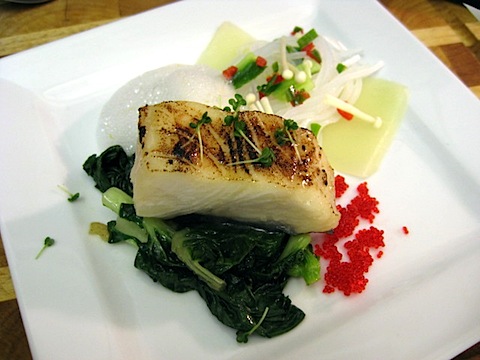 Step 9: If you want that beautiful and flavorful crust, you can get a pan nice and hot and sear the outsides of the meat (I would use butter!)
Step 9: If you want that beautiful and flavorful crust, you can get a pan nice and hot and sear the outsides of the meat (I would use butter!)
Step 10: Serve with your favorite fixins and accompaniments. I hope you have some fun with this method of cooking, as I know I have.
For now, Good Luck and Good Eating!
~Chef Brian
Black Cod Sous Vide


